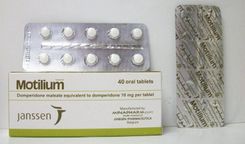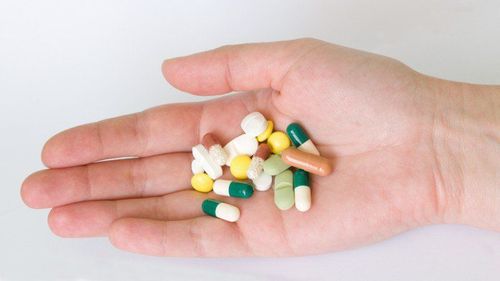This is an automatically translated article.
Mibelexin 500mg is an oral antibiotic, the 1st generation cephalosporin group. Mibelexin is manufactured by LD Hasan Dermapharm Co., Ltd. In addition to the use of Mibelexin 500mg, the following article also notes the side effects of Mibelexin 500mg.
1. What is Mibelexin 500mg?
Drug name: Mibelexin 500 mg
Active ingredient name: Cefalexin monohydrate corresponding to 500 mg Cefalexin
Content: 500 mg
Dosage form: Hard capsule
Standard: USP 32
Packing: Box of 10 blisters x 10 tablets
Registration number: VD-18117-12
Expiry date: 36 months
Manufacturer: Hasan-Dermapharm Joint Venture Co., Ltd.
2. Uses of Mibelexin 500mg
Cefalexin is indicated in the treatment of mild and moderate infections caused by susceptible bacteria:
Respiratory tract infections: Acute and chronic bronchitis, infectious bronchiectasis. Ear, nose and throat infections: Otitis media, mastoiditis, sinusitis, tonsillitis and pharyngitis. Urinary tract infections: Cystitis, prostatitis. Prophylaxis of recurrent urinary tract infections. Obstetric and gynecological infections. Skin, soft tissue and bone infections. Gonorrhea and syphilis (when penicillin is not suitable). Prophylactic treatment instead of penicillin for patients with heart disease requiring dental treatment.
3. Mechanism of action of the drug
Pharmacodynamics:
Cefalexin is a 1st generation cephalosporin antibiotic, which has bactericidal effect against a wide range of Gram-positive and Gram-negative bacteria by inhibiting bacterial cell wall synthesis. Cefalexin is stable to the penicillinase of Staphylococcus and is therefore active against penicillinase-producing strains of Staphylococcus aureus (or ampicillin). Cefalexin is also active against most ampicillin-resistant E. Coli.
Most strains of Enterococcus (Streptococcus faecalis) and a few strains of Staphylococcus are resistant to Cefalexin. Proteus indol was positive, some Enterobacter spp, Pseudomonas aeruginosa, Bacteroides spp, also showed resistance. When tested in vitro, Staphylococcus exhibited cross-resistance between cefalexin and methicillin-type antibiotics.
According to the data (ASTS) 1997, Cefalexin is effective against Staphylococcus aureus, Salmonella, E. coli with the rate of resistance to Cefalexin about 50%; Proteus has a resistance rate of about 25%; Enterobacter has a resistance rate of about 23%; Pseudomonas aeruginosa has a resistance rate of about 20%.
Mechanism of action:
Cefalexin is a 1st generation cephalosporin antibiotic, which has a bactericidal effect by inhibiting bacterial cell envelope synthesis. Cefalexin is an oral antibiotic with an antibacterial spectrum similar to that of first-generation cephalosporins.
Pharmacokinetics:
Absorption: Cefalexin is almost completely absorbed from the gastrointestinal tract and reaches peak plasma concentrations at about 9 and 10, respectively. 18 μg/ml after one hour with doses of 250 mg and 500 mg, respectively. Taking Cefalexin with food may slow absorption, but the total amount of drug absorbed is unchanged.
Distribution: Cefalexin is widely distributed throughout the body, but the amount in the cerebrospinal fluid is negligible. Cefalexin crosses the placenta and is excreted in low concentrations in breast milk.
Metabolism: Cefalexin is not metabolized.
Elimination: About 80% of the dose is excreted unchanged in the urine during the first 6 hours by glomerular filtration and tubular secretion. The half-life is usually about 0.5 to 1.2 hours but is longer in neonates and individuals with impaired renal function.
4. Dosage – How to take Mibelexin 500mg
Usage : Use orally.
Dosage :
Adults : Usually 250 - 500 mg / time, every 6 hours, depending on the degree of infection. Dosage can be up to 4g/day.
Children: 25 - 60 mg/kg body weight in 24 hours, divided into 2-3 doses. The maximum dose is 100 mg/kg body weight in 24 hours.
Note: The duration of treatment should last for at least 7-10 days, but in cases of complicated, recurrent, chronic urinary tract infections, it is recommended to treat for 2 weeks (1g/time, 2 days to take 2 pills) time).
Adjust dose in case of renal failure:
If creatinine clearance (TTC) = 50 ml/min, serum creatinine (CHT) = 132 micromol/l, maximum maintenance dose (LDD): 1g, 4 times per day 24 hours.
If TTC is 49-20 ml/min, CHT: 133-295 micromol/l, LDT: 1g, 3 times in 24 hours.
If TTC is 19-10 ml/min, CRT: 296-470 micromol/l, LDT: 500mg, 3 times in 24 hours.
If TTC = 10ml/min, MRI = 471 micromol/l, LD: 250 mg, 2 times in 24 hours.
5. Contraindications
Do not use for patients with hypersensitivity to beta-lactam antibiotics.
Precautions :
Cefalexin is generally well tolerated even in penicillin-allergic patients, although a very small number of cross-allergic reactions occur. Long-term use of Cefalexin will lead to overgrowth of non-susceptible organisms (eg Candida, Enterococcus, Clostridium difficile...), in which case the drug should be discontinued. Attention should be paid to the diagnosis of pseudomembranous colitis in patients with severe diarrhea during or after antibiotic therapy.
During long-term treatment with cefalexin, blood, kidney and liver function tests should be performed periodically. Reduce dose in patients with renal impairment.
Effects of the drug on driving and operating machinery.
Use caution when driving and operating machinery.
Use in pregnancy and lactation :
Warning rating
AU TGA pregnancy category: A
US FDA pregnancy category: B
Pregnancy:
Empirical studies and clinical experience showed any evidence of fetotoxicity or teratogenicity. However, cefalexin should be used during pregnancy only when clearly needed.
Lactation period :
Cefalexin concentration in breast milk is very low. Even so, a temporary cessation of breastfeeding should be considered while the mother is taking cephalexin.
6. Mibelexin 500mg side effects
Common (ADR>1/100): Diarrhea, nausea. Uncommon (1/1000
7. Instructions on how to deal with ADR
Instructions on how to manage ADR: stop Cefalexin. If allergy or hypersensitivity is severe, supportive treatment should be instituted. Mild pseudomembranous colitis usually requires discontinuation of the drug; In moderate and severe cases, attention should be paid to the use of fluids and electrolytes, protein supplementation and treatment of C. difficile colitis.
8. Interactions with other drugs
Cholestyramine binds to cefalexin in the intestine, slowing its absorption. Co-administration with probenecid increases the half-life of cefalexin and increases serum concentrations of cefalexin. Taking high doses of Cefalexin with aminoglycosides, furosemide, and ethacrynic acid increases nephrotoxicity. Use for pregnant and lactating women
9. Overdose and treatment
Symptoms of overdose are mostly just nausea, vomiting and diarrhea. Neuromuscular excitability and convulsions may occur, especially in patients with renal impairment. Management Except when mistakenly taking 5 to 10 times the normal dose, other cases do not require gastrointestinal lavage. Protect the patient's airway, assist with ventilation, and administer fluids. Storage:
Cephalexin tablets and capsules should be kept in sealed vials, stored at a temperature of 15-30oC and protected from light.
Please dial HOTLINE for more information or register for an appointment HERE. Download MyVinmec app to make appointments faster and to manage your bookings easily.













